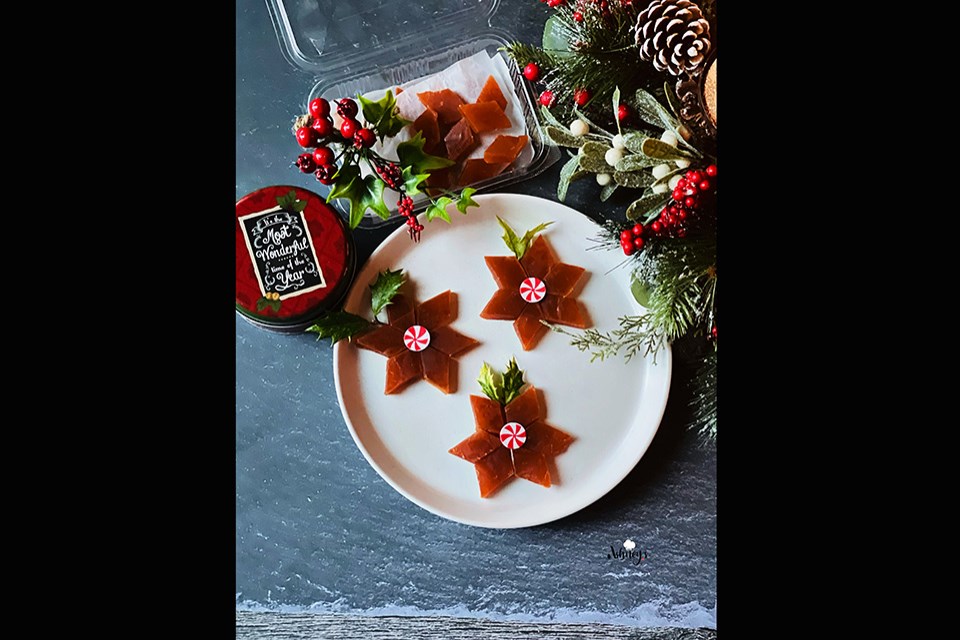Guava cheese is one of the most commonly prepared sweets in most traditional Catholic households for Christmas.
It is chewy and yet a melt-in-the-mouth kind of fudge if prepared correctly. It is known as Perad in Goa — a small state in India that was ruled by the Portuguese.
Most of our food is influenced by Portuguese culture and we love our culture.
In Goa, we have lots of guava trees and we pluck our own to make this Christmas fudge as this recipe is one done by generations.
My grandma passed it over to us; she used to do it outdoors on fire and we all use to be excited to do it with her.
And it’s tradition!
My daughter loves it, so I passed this family recipe to he and she loves making it with me. Maybe, one day, she will pass it to her kids.
So I share this family recipe with you, which started in 1880 with my grandmother’s grandmother and it continues forever. 🎄🎄🎄
Ingredients
- Guava cheese (Perad)
- 1 cup of guava pulp (take big ripe guava’s — light green in colour)
- 1 cup of granular sugar
- 1–2 tsp of ghee (clarified butter)
- Juice from 1 lime
- Red colouring (optional)
Directions
Cut the guavas into halves and place them in a vessel.
Pour water over the guavas and bring the water to the level of the guavas.
Cover the vessel with a lid and boil the guavas. You need to boil until they are slightly soft.
Sign that the guava’s are ready: The seeds will pop on the top, making the centre rise slightly.
Once done, take it off the heat, remove the guava’s from the water and let it sit at room temperature.
Scoop the centre seed portion of the guava and pulse it in the mixture (up to three pulses, not too much or else the seeds will turn into powder, grainy).
Pass this through a strainer, separating the seeds from the pulpy portion. Put pulp in a separate bowl.
Similarly, put the remaining guava into the mixer with the skin on and grind until you get a paste-like texture (do not strain this mixture, as you did for the seeds).
Combine this with the pulp-from-the-seeds portion. Your guava pulp is ready to be used.
Note: You can store this guava pulp in an airtight container in the fridge for about a week and freezer for about a month. It can then be used to make guava cheese at your convenience.
Ashney Rebello of Coquitlam is a homemaker, recipe developer and freelance writer for food magazines. She's currently writing her own cookbook — Ashney's Kitchen Stories.





